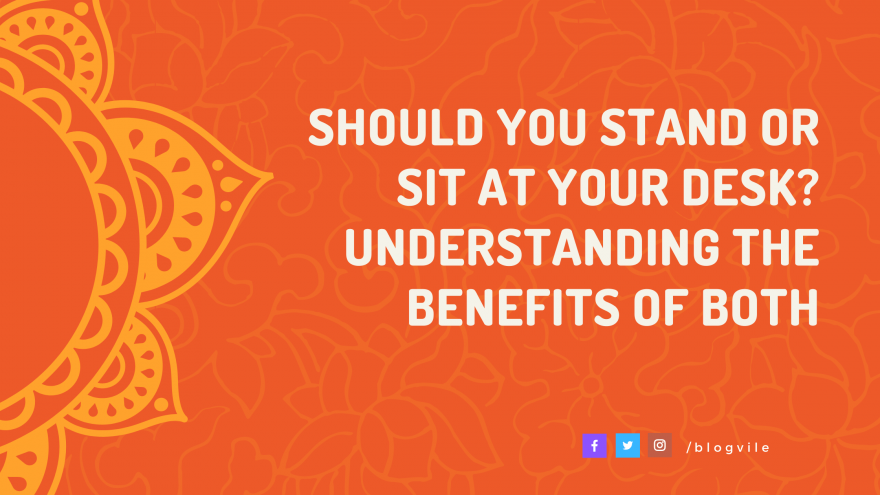Should you stand or sit at your desk? This is a question asked more and more frequently over the years. While some wax lyrical about standing, others prefer the traditional approach of sitting. But which is better?
Well, all the scientists and research point towards a combination of both. As a result, the number of sit-stand desks on the market has steadily increased over the years.
Benefits of Standing
Firstly, standing engages more muscles and joints. As you keep the blood pumping around the body, you burn more calories and are more active. For those who wear an Apple Watch or FitBit, you’ll notice that your step count increases. If you’re looking to assume a more active lifestyle or lose weight, this could be one way to go.
Elsewhere, standing boosts core strength as well as posture for workers. Although it can take some days to get used to standing at work, most people find that back pain decreases compared to sitting all day.
Away from the benefits for your body, a stand up desk encourages collaboration and better relationships with colleagues. When sitting, it’s sometimes difficult to get the motivation to stand up and walk across the office. We’re more likely to store up reasons to walk across the office and do them in one journey. When standing, it’s easier to move around and we’re more likely to make journeys across the office to colleagues, the printer, the kitchen, etc.
Benefits of Sitting
However, despite all the benefits of standing desks, there is such a thing as too much of a good time. While standing from time to time is beneficial, standing all day is likely to cause problems. Suddenly, the feet, ankles, calves, and knees are under lots of pressure. Throughout the day, they get very little rest. Over time, this leads to fatigue and stiffness.
After standing at a desk all day, you’re more likely to get home from work and forgo a gym session because you’re already tired. Though you get all the benefits of standing, these benefits are lost if it prevents you from exercising as planned. Especially during the first few weeks, the last thing you’ll want after a day of standing is to go for a run.
With this in mind, sitting takes the weight off your feet. As long as you maintain a good posture and don’t slouch in the chair, you rest the knees, ankles, feet, and calves. By using less energy during the day, you’re more likely to enjoy exercise in the evening.
Sit-Stand Desks
Consequently, many people find sit-stand desks to be the perfect balance between all these benefits and drawbacks. Of course, sit too long at a desk and you aren’t burning any calories, the joints don’t stay warm, you’ll have poor core strength and posture, and collaboration falters.
With a sit-stand desk, you spend part of the day sitting and part of the day standing. You enjoy the benefits of both – you get increased core strength and posture while then relieving the legs and feet when required.
According to Harvard Health, standing desks could be helpful for diabetes, obesity, premature death, and cardiovascular disease. Rather than just the benefits of standing, it’s mainly the drawbacks of long periods of sitting that you avoid that helps.
If you don’t want to develop back and leg problems when at work, try splitting your time between sitting and standing with a fantastic sit-stand desk!
